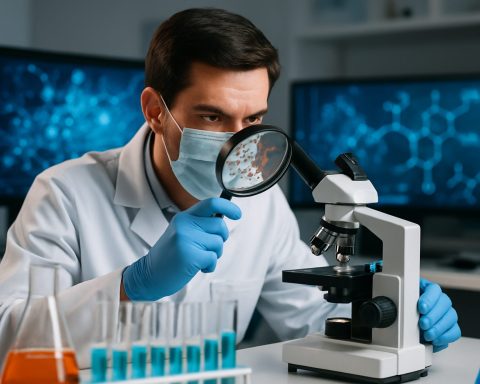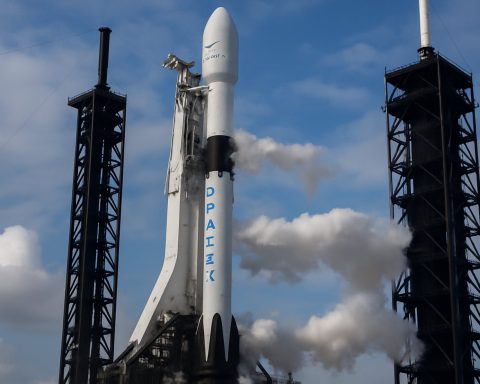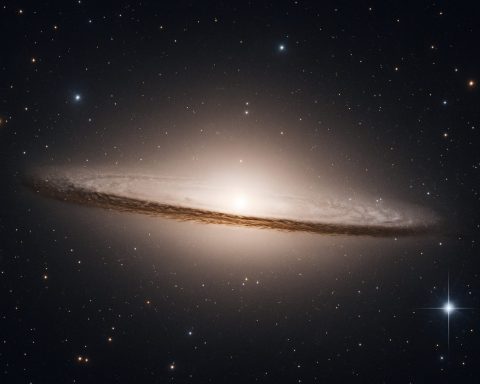- A Soyuz capsule successfully landed in Kazakhstan, concluding a 220-day mission from the International Space Station (ISS) for astronauts Alexey Ovchinin, Ivan Vagner, and Don Pettit.
- The mission demonstrated the spirit of international cooperation, with research spanning biology to physics, vital for the future of space exploration.
- The landing was flawless, and standard medical checks were performed to assess the effects of microgravity on the astronauts.
- Don Pettit celebrated his 70th birthday on landing day, highlighting human endurance and the pursuit of exploration.
- The seamless transition of ISS command to Japanese astronaut Takuya Onishi ensured continuity of operations.
- The mission emphasized global collaboration in space, transcending earthly conflicts, and inspiring future generations.
Amid the vast and whispering steppes of Kazakhstan, under a sprawling dawn sky, a Soyuz capsule made its gentle descent. The sleek vessel, bearing a team from the International Space Station (ISS), embedded itself in the grassy expanse near Zhezkazgan, marking the end of an awe-inspiring 220-day journey through the cosmos.
From orbiting Earth an astounding 3,520 times to orchestrating science experiments that could alter the future of space travel, the trio of Alexey Ovchinin, Ivan Vagner, and Don Pettit personified the spirit of international cooperation. Their research encompassed a broad range of topics, from biology to physics, each day unraveling secrets of the universe while tethered to the confines of the space station.
The journey concluded with Sunday’s flawless landing, closely followed by meticulous medical checks. These evaluations are standard protocol to ensure the well-being of astronauts after their prolonged exposure to microgravity, which can lead to muscle atrophy and bone loss. For Don Pettit, who happened to celebrate his 70th birthday on landing day, the return was particularly symbolic—a testament to human endurance and the unwavering pursuit of exploration, regardless of age.
As the parachute-assisted descent presented no complexities, the capsule’s landing echoed a sense of serene accomplishment. Those present, though armed with state-of-the-art recovery tools, merely watched as the triumvirate emerged into the morning chill, ready to embark on their longer journey home. The Americans and Russians, though separated by nationality, were united in the profound experience of having been among the few to gaze down upon our blue planet from the silent void.
Pettit, a seasoned astronaut with multiple missions under his belt, was soon headed to Houston’s Johnson Space Center, where family and colleagues awaited his return. Meanwhile, his companions, Ovchinin and Vagner, were bound for Star City, a historical beacon of Russian space training.
In a poignant transition just two days earlier, Ovchinin had entrusted the command of the ISS to Japanese astronaut Takuya Onishi, ensuring the continuity of human presence and scientific inquiry aboard humanity’s orbital outpost.
The landing underscored a broader perspective — that despite terrestrial tensions, space remains a realm where collaboration transcends borders. It’s a celebration of human ingenuity and tenacity, as well as a reminder of the fragile beauty of our shared home. This mission, while over, serves to inspire a new generation, beckoning us all to look up at the stars and consider the boundless possibilities waiting beyond.
Stunning Insights and Facts You Didn’t Know About the ISS Soyuz Landing!
Unraveling the Significance of a Soyuz Return
The recent return of the Soyuz capsule near Zhezkazgan, Kazakhstan, marks the end of a significant journey for astronauts Alexey Ovchinin, Ivan Vagner, and Don Pettit after an impressive 220-day mission aboard the International Space Station (ISS). Let’s delve into more insights that take a behind-the-scenes look at this mission, its scientific contributions, and the broader implications for space exploration.
The Science Behind the Mission
1. Scientific Experiments: The crew conducted numerous experiments across disciplines like biology, where they studied how plant cells adapt to microgravity, and physics, exploring fluid dynamics without the interference of gravity. These studies hold transformative potential for advancements in space travel and could significantly enhance resource utilization on long-duration missions.
2. Medical Evaluations: Post-landing, astronauts undergo comprehensive medical examinations to assess the impact of extended space travel on the body. This includes studying muscle atrophy and bone density loss, as gravity affects the musculoskeletal system differently in space.
3. Research Outcomes: One key accomplishment during this mission was studying the effects of space travel on aging, which could pave the way for new medical treatments for bone and muscle diseases on Earth.
Technology and Innovation
– Soyuz Capsule Design: The Soyuz spacecraft is renowned for its reliability, featuring robust design elements for safe re-entry and accurate landings. It has served as a steadfast workhorse for transporting astronauts to and from the ISS.
– Collaboration Dynamics: The seamless handing-off of ISS command from Ovchinin to Takuya Onishi underscores the international cooperation framework that remains a cornerstone of space endeavors.
The Future of Space Exploration
Trends and Predictions:
– As the landscape shifts towards increased participation by private entities, international collaboration remains pivotal. NASA, Roscosmos, and burgeoning private firms like SpaceX and Blue Origin continue to reshape the future of space exploration, focusing on destinations beyond low Earth orbit.
– Commercialization of Space Travel: The mission is a quintessential example of the benefits of partnerships between governmental space agencies. As the commercial sector plays a larger role in space travel, expect greater accessibility and innovations in spacecraft efficiency and cost-effectiveness.
– Sustainability Focus: Future missions will likely incorporate more vigorous sustainability practices to minimize environmental impact, embracing materials and technologies that are eco-friendly.
Pros and Cons of International Space Missions
Pros:
– Shared Expertise: Collaborative missions pool expertise from various nations leading to innovation and scientific breakthroughs.
– Cost Efficiency: Joint missions split the high costs associated with space endeavors.
Cons:
– Political Tensions: Diplomatic issues can impact project timelines and funding.
– Coordination Challenges: Requires meticulous planning to manage multinational teams and resources effectively.
Final Thoughts and Recommendations
For enthusiasts eager to follow the footsteps of astronauts like Don Pettit, engaging with STEM education is integral. Aspiring space explorers should focus on honing skills in engineering, biology, and physics.
Meanwhile, the public can support space exploration by advocating for continuous investment in science and technology.
For more information about ongoing space missions and insights, visit NASA or Roscosmos.
Remember, every glance at the night sky holds the potential for discovery and wonder, encouraging us to transcend earthly confines as we explore the vastness of the universe.








